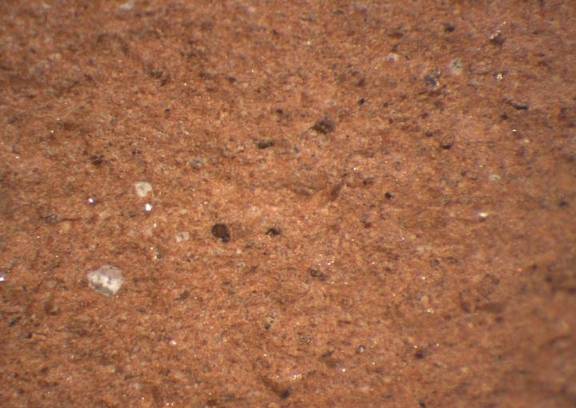

PAE-G-8, M 237/3, 40x


PAE-G-8, M 237/3, 25x


PAE-G-8, M 237/3, 16x


PAE-G-8, M 237/3, 8x
| fabric description | object data | archaeometry |
| fabric type | PAE-G-8 |
|---|---|
| ware | Glazed Wares |
| supposed site of production | Paestum |
| visual excamination of fresh break | yellowish red, fracture surface granular |
| texture of freshly broken surface | granular |
| hardness | hard |
| porosity | 5%; void form: vughy; channel; void length: 0.025-0.3 |
| inclusions | 5%, length: 0.025-0.2 |
| sorting | unsorted |
Inclusions |
|
| quartz | infrequent, angular, spherical, clear, 0.05-0.25 |
| mica | infrequent, angular, spherical, white, 0.025 |
| calciumcarbonate | infrequent, rounded, spherical - subspherical, white, 0.05-0.12 |
| carbonate pseudomorphoses | infrequent, well rounded, spherical, white, 0.025-0.5 |
| reddish inclusions | infrequent, rounded, spherical, reddish brown, 0.05-0.12 |
| black inclusions | infrequent, rounded, spherical, black, 0.025-0.5 |
| grey inclusions | infrequent, rounded, spherical - subspherical, grey, 0.05-0.12 |
Cite this page as: FACEM - http://facem.at/m-237-3

 production
production
 sampling
sampling





